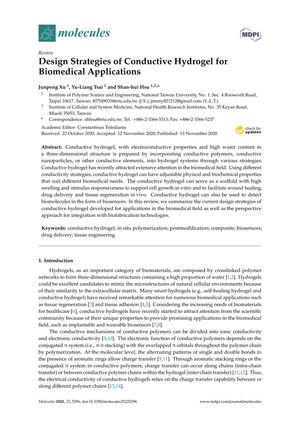Design Strategies of Conductive Hydrogel for Biomedical Applications
November 2020
in “
Molecules
”

TLDR Conductive hydrogels show promise for medical uses like healing wounds and tissue regeneration but need improvements in safety and stability.
The document from November 13, 2020, reviews the design, development, and applications of conductive hydrogels in the biomedical field, emphasizing their potential in biosensors, wound dressings, drug delivery, and tissue regeneration. It explains that these hydrogels combine electroconductive properties with high water content, and their conductivity can be either ionic or electronic. The document outlines various strategies for preparing conductive hydrogels, such as in situ polymerization, post polymerization, and composite strategies, each with its own set of pros and cons. It also stresses the importance of biocompatibility and biodegradability, achieved through biofriendly polymers and processes. Conductive hydrogels are shown to enhance cell activity and proliferation, with examples including hydrogels that support the synchronous beating of cardiomyocytes and the proliferation of myoblastic cells. Challenges such as long-term stability and cytotoxicity need to be addressed for their use in larger animal models or clinical studies. The future of conductive hydrogels in biomedical applications will rely on advancements in conductive strategies, material choices, functionality, and fabrication technologies.